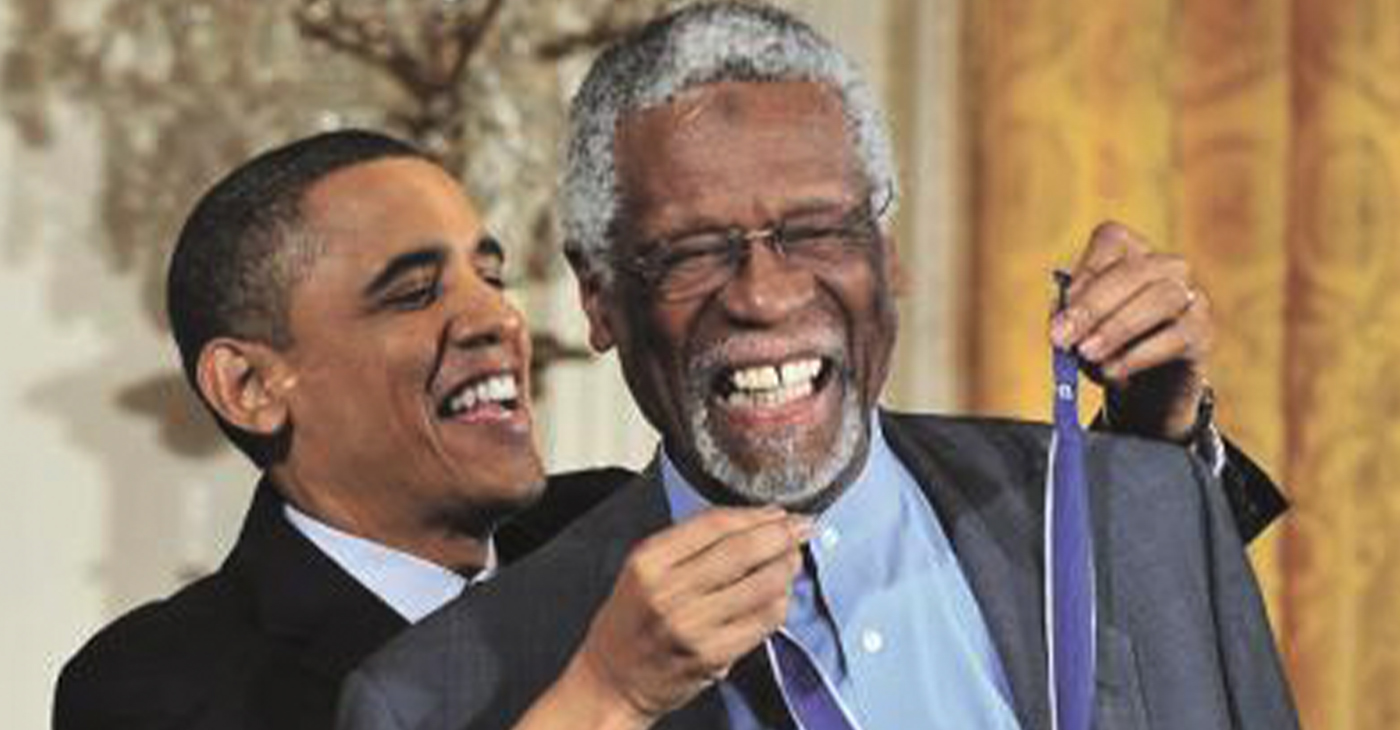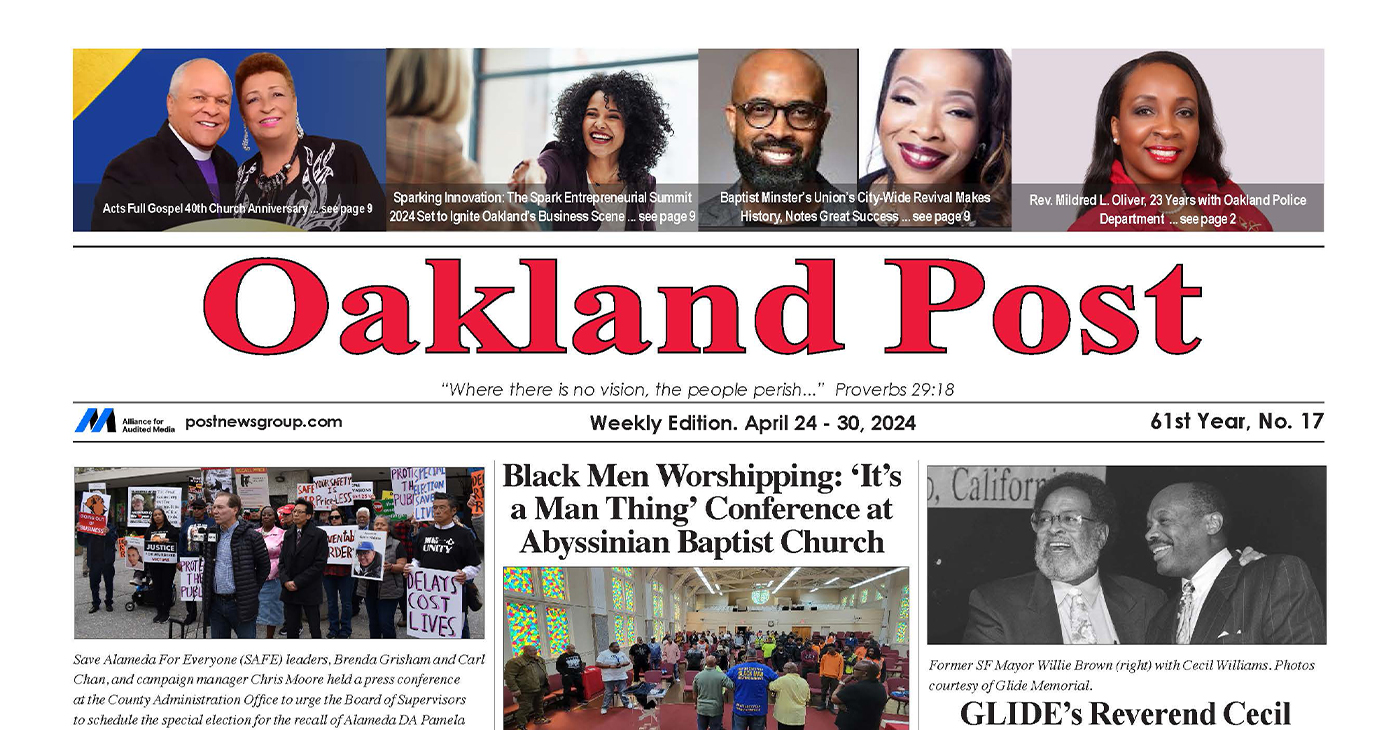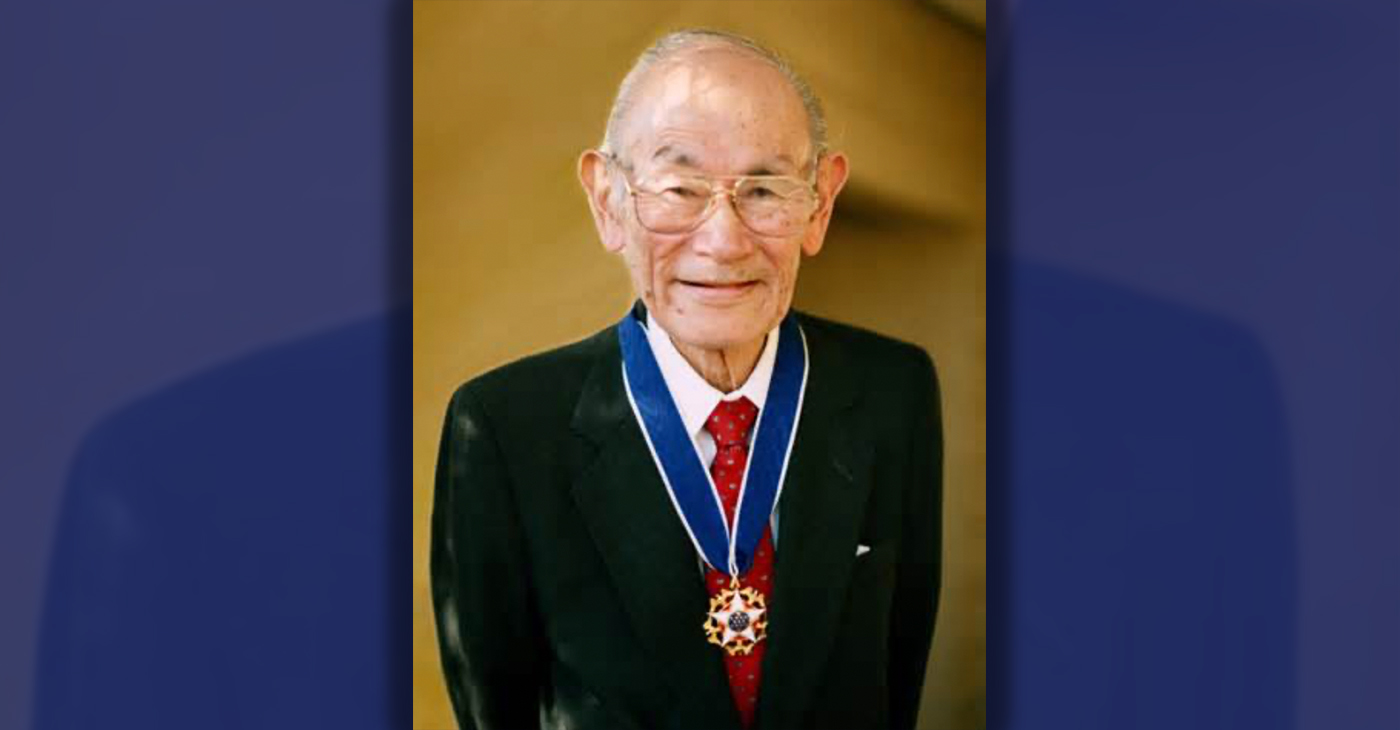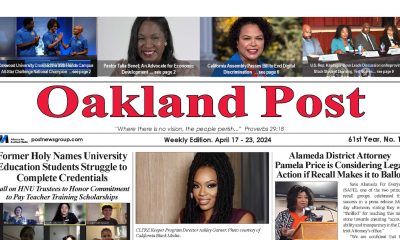Activism
IN MEMORIAM: Oakland’s Own Bill Russell, 88, Greatest Athlete/Civil Rights Activist Ever (Part 1)
NNPA NEWSWIRE — William Felton Russell was born on Feb. 12, 1934, in Monroe, La., and his family moved to West Oakland in 1942 when he was 8. His father found work on the waterfront and in the Bay Area shipyards in the middle of World War II. They instilled in him a history of racial and family pride that helped him survive in a racially discriminatory Boston environment while playing for the Boston Celtics.

By Paul Cobb, Post News Group Publisher
Bill Russell, the center of attention in professional basketball, died at 88 after becoming the most decorated athlete in all of the team sports in the United States.
The star of the Boston Celtics from 1956-1969, he changed the way basketball was played by applying his rare combination of basketball and track and field athleticism to fashion a defense-centered dominance. In a sport where one’s ability to score points was prized, he reversed the focus by making defensive thinking to prevent others from scoring.
He died on July 31, after more than 70 years of basketball and civil rights activism.
William Felton Russell was born on Feb. 12, 1934, in Monroe, La., and his family moved to West Oakland in 1942 when he was 8. His father found work on the waterfront and in the Bay Area shipyards in the middle of World War II. They instilled in him a history of racial and family pride that helped him survive in a racially discriminatory Boston environment while playing for the Boston Celtics.
In his early years his home was only three blocks east from Ron Dellums, Oakland’s first Black congressman, and just three blocks west from Frank Robinson, Oakland’s first Black Major League Baseball coach.
While living near Ninth and Center streets, he learned early on that one must fight for honor, dignity, and respect by never backing down from any challenge whether through fisticuffs or verbal slights.
He was mentored at Defremery Park and Recreation Center by the late Dorothy Seale Pitts and George Scotlan along with Bill Patterson, who now serves as an EBMUD Director, to stay centered on what mattered.
Even though he pioneered greatness as an athlete and as a scholar/athlete/civil rights activist who fought to achieve dignity and respect for African Americans, his path to recognition and honor was not easy because was not considered good enough to crack the starting five basketball Warriors lineup at McClymonds High School in West Oakland.
He never stopped trying and practicing with his teammates who were better shooters and scorers. But, at 6-foot 10 inches, he was taller and could jump higher and played defense above the rim. He even became the Warriors’ mascot who created a stunning nimble artistic dance routine as the team’s mascot.
(His achievements attracted many who sought to follow in his footsteps with stylized dance routines that were featured during halftime breaks.)
His mother died when he was 12, never seeing Bill win two state prep titles and two national college crowns at the University of San Francisco after being ignored by many colleges because he was Black.
He was a five-time NBA Most Valuable Player and captain of the 1956 U.S. Gold Medal team at the Melbourne Olympics. He drastically altered defensive play by excelling in rebounding, shot-blocking, and passing to ignite a fast-paced style of play.
He won eight consecutive NBA titles from 1959-1966. As a player-coach in his final three seasons, Russell was the first Black coach in North American sports and the first to win a title, doing so in 1968 and again in his 1969 farewell campaign.
He was the first Black player inducted into the Basketball Hall of Fame in 1975 and was awarded the Presidential Medal of Freedom in 2011 by Barack Obama, America’s first Black president, for his civil rights and basketball achievements.
Russell was first among Oakland’s and the country’s athletic achievers. His USF team was the first major college to start three Black players. His Celtics team was the first to start five Black players. He was the first to become a player-coach. And he was the first player-coach to win an NBA title. He was first to be invited by Dr. Martin Luther King, Jr. to speak at the 1963 March on Washington. He was the first athlete to utilize his celebrity by traveling to Mississippi to use sports to bring racial healing after the KKK killed NAACP leader Medgar Evers.
As the first-ranked and highest respected Black sportsman, he used his status to lead the nation’s leading Black athletes which included Jim Brown, Lew Alcindor (Kareem Abdul Jabbar) and many others to support Muhammad Ali’s stance against the Vietnam War.
He always remembered his friends and mentors here in Oakland. Whenever he traveled to Oakland, he would often check in with Maxine Willis Ussery and reminisce about the days when his family would visit her family’s cleaning establishment.
She said he was protective of her and wanted to meet and give his approval to any of her dates and he insisted that he go to dinner with her and fiance Wilfred Ussery to give his approval. Maxine is now the office manager at the Post News Group (Oakland Post).
He paid one of his highest compliments to Bill Patterson for guiding and counseling him since his high school days. He said Patterson helped him understand that he must never allow himself to be a victim. He was proud of Coach Ben Tapscott, the McClymonds’ basketball coach, who not only continued to maintain the school’s tradition as the winningest high school in the country with an emphasis on academic achievements.
He invited Tapscott to share the glory with him when he was inducted and honored by the University of San Francisco.
In an interview with Russell and former WNBA Coach Nancy Lieberman, just months before his passing, he was making plans to donate a jointly signed basketball to salute the achievement of Oakland’s African American Sports and Entertainment Group for purchasing the Oakland Coliseum.
Bill Patterson, Geoffrey Pete, Ben Tapscott, Joe Ellis, Jumoke Hinton, Rev. Gerald Agee, Ray Bobbitt, Arif Khatib, Virtual Murrell, Gary Reeves, Nancy Lieberman, Jonathan Jones, Al Attles, Jr. and many others have asked The Post to put them on the task force to gather the list and honor the Bay Area’s historic cavalcade of Athlete/Activists who also became “firsts” in their respective sports. For those who want to volunteer to be included, please contact Maxine Ussery @510-287-8200 or mussery@postnewsgroup.com.
“We must find a way to honor our highest achievers,” said Bill Patterson and Ben Tapscott
Activism
Oakland Post: Week of April 24 – 30, 2024
The printed Weekly Edition of the Oakland Post: Week of April 24 – 30, 2024

To enlarge your view of this issue, use the slider, magnifying glass icon or full page icon in the lower right corner of the browser window. ![]()
Activism
Oakland Post: Week of April 17 – 23, 2024
The printed Weekly Edition of the Oakland Post: Week of April 17 – 23, 2024

To enlarge your view of this issue, use the slider, magnifying glass icon or full page icon in the lower right corner of the browser window. ![]()
Activism
Oakland Schools Honor Fred Korematsu Day of Civil Liberties
Every Jan. 30, OUSD commemorates the legacy of Fred Korematsu, an Oakland native, a Castlemont High School graduate, and a national symbol of resistance, resilience, and justice. His defiant stand against racial injustice and his unwavering commitment to civil rights continue to inspire the local community and the nation. Tuesday was “Fred Korematsu Day of Civil Liberties and the Constitution” in the state of California and a growing number of states across the country.

By Post Staff
Every Jan. 30, OUSD commemorates the legacy of Fred Korematsu, an Oakland native, a Castlemont High School graduate, and a national symbol of resistance, resilience, and justice.
His defiant stand against racial injustice and his unwavering commitment to civil rights continue to inspire the local community and the nation. Tuesday was “Fred Korematsu Day of Civil Liberties and the Constitution” in the state of California and a growing number of states across the country.
One OUSD school is named in his honor: Fred T. Korematsu Discovery Academy (KDA) elementary in East Oakland.
Several years ago, founding KDA Principal Charles Wilson, in a video interview with anti-hate organization “Not In Our Town,” said, “We chose the name Fred Korematsu because we really felt like the attributes that he showed in his work are things that the children need to learn … that common people can stand up and make differences in a large number of people’s lives.”
Fred Korematsu was born in Oakland on Jan. 30, 1919. His parents ran a floral nursery business, and his upbringing in Oakland shaped his worldview. His belief in the importance of standing up for your rights and the rights of others, regardless of race or background, was the foundation for his activism against racial prejudice and for the rights of Japanese Americans during World War II.
At the start of the war, Korematsu was turned away from enlisting in the National Guard and the Coast Guard because of his race. He trained as a welder, working at the docks in Oakland, but was fired after the bombing of Pearl Harbor in 1941. Fear and prejudice led to federal Executive Order 9066, which forced more than 120,000 Japanese Americans out of their homes and neighborhoods and into remote internment camps.
The 23-year-old Korematsu resisted the order. He underwent cosmetic surgery and assumed a false identity, choosing freedom over unjust imprisonment. His later arrest and conviction sparked a legal battle that would challenge the foundation of civil liberties in America.
Korematsu’s fight culminated in the Supreme Court’s initial ruling against him in 1944. He spent years in a Utah internment camp with his family, followed by time living in Salt Lake City where he was dogged by racism.
In 1976, President Gerald Ford overturned Executive Order 9066. Seven years later, the 9th Circuit Court of Appeals in San Francisco vacated Korematsu’s conviction. He said in court, “I would like to see the government admit that they were wrong and do something about it so this will never happen again to any American citizen of any race, creed, or color.”
Korematsu’s dedication and determination established him as a national icon of civil rights and social justice. He advocated for justice with Rosa Parks. In 1998, President Bill Clinton gave him the Presidential Medal of Freedom saying, “In the long history of our country’s constant search for justice, some names of ordinary citizens stand for millions of souls … To that distinguished list, today we add the name of Fred Korematsu.”
After Sept. 11, 2001, Korematsu spoke out against hatred and discrimination, saying what happened to Japanese Americans should not happen to people of Middle Eastern descent.
Korematsu’s roots in Oakland and his education in OUSD are a source of great pride for the city, according to the school district. His most famous quote, which is on the Korematsu elementary school mural, is as relevant now as ever, “If you have the feeling that something is wrong, don’t be afraid to speak up.”
-

 Activism4 weeks ago
Activism4 weeks agoOakland Post: Week of March 27 – April 2, 2024
-

 #NNPA BlackPress4 weeks ago
#NNPA BlackPress4 weeks agoBeloved Actor and Activist Louis Cameron Gossett Jr. Dies at 87
-

 Community1 week ago
Community1 week agoFinancial Assistance Bill for Descendants of Enslaved Persons to Help Them Purchase, Own, or Maintain a Home
-

 Activism3 weeks ago
Activism3 weeks agoOakland Post: Week of April 3 – 6, 2024
-

 Business1 week ago
Business1 week agoV.P. Kamala Harris: Americans With Criminal Records Will Soon Be Eligible for SBA Loans
-

 Activism2 weeks ago
Activism2 weeks agoOakland Post: Week of April 10 – 16, 2024
-

 Community1 week ago
Community1 week agoAG Bonta Says Oakland School Leaders Should Comply with State Laws to Avoid ‘Disparate Harm’ When Closing or Merging Schools
-

 Community6 days ago
Community6 days agoOakland WNBA Player to be Inducted Into Hall of Fame





















































